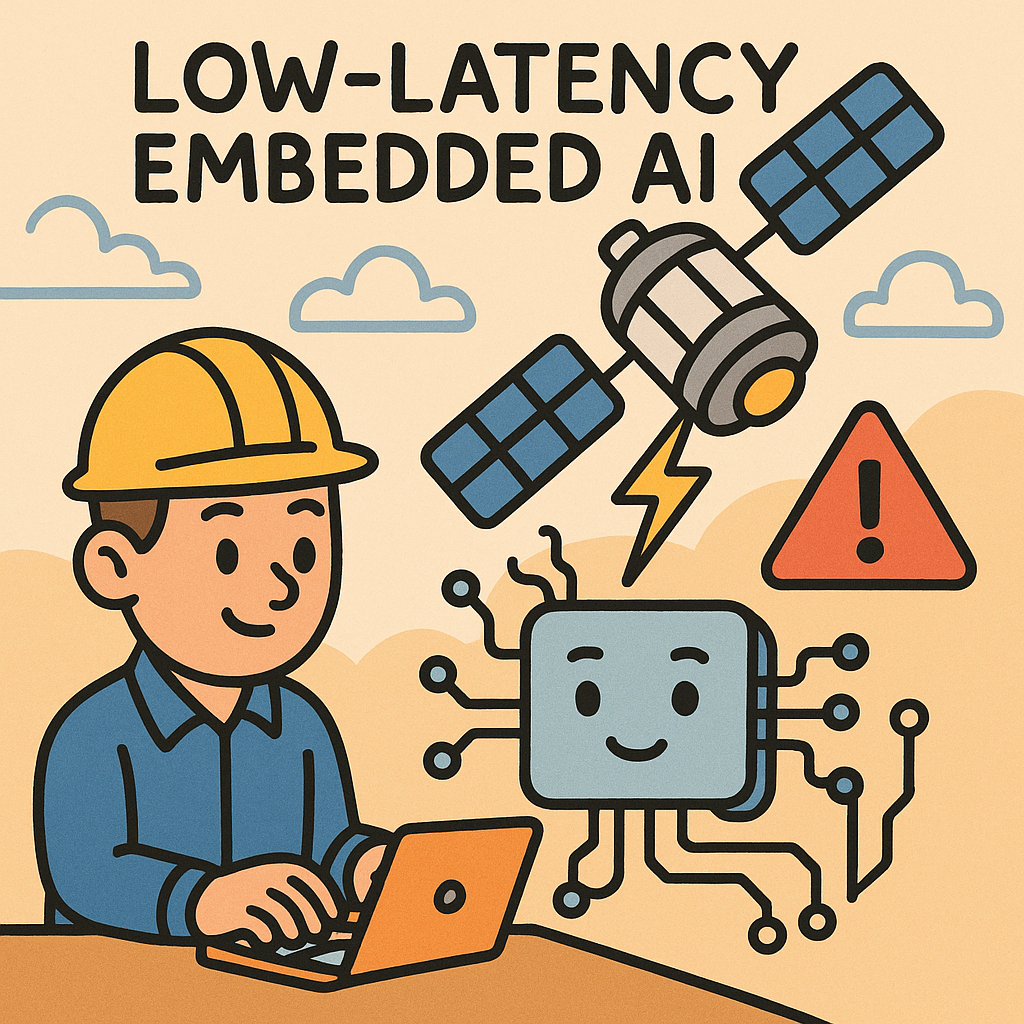Understanding the Challenge of Anomaly Detection in Satellite Attitude Control
When we think about satellites, we often envision these incredible machines gracefully gliding through the cosmos, collecting data and communicating with Earth. However, behind this façade lies a complex network of systems, particularly in how they maintain their orientation, or attitude. Satellite attitude control systems must react dynamically to a variety of conditions, including gravitational forces, solar radiation, and even atmospheric drag. This is where the challenge of anomaly detection comes into play. If a satellite strays from its intended path due to an unexpected event, it can lead to mission failure.
The Role of Low-Latency Embedded Systems
To effectively monitor and respond to such anomalies, implementing a low-latency embedded system is crucial. These systems can process data from sensors and execute commands in real-time, ensuring that any deviations in attitude are corrected promptly. However, achieving low latency is not just a matter of selecting the right hardware; it requires a holistic approach encompassing both firmware and algorithm design.
Choosing the Right Hardware
The first step in building an effective embedded system is selecting the appropriate hardware. For satellite applications, power consumption and weight are critical factors. Microcontrollers like the ARM Cortex-M series or specialized FPGAs are often favored due to their efficient processing capabilities and low power requirements. For instance, an FPGA can be particularly advantageous as it allows for parallel processing, which is ideal for handling multiple sensor inputs simultaneously.
Sensor Fusion for Accurate Data Interpretation
Once the hardware is in place, the next challenge involves data acquisition and interpretation. Satellites typically employ a range of sensors, including gyroscopes, accelerometers, and magnetometers. The key here is sensor fusion — combining data from these sensors to produce a more accurate representation of the satellite’s attitude. Implementing algorithms such as the Kalman filter can significantly enhance this process, but it requires careful tuning to balance responsiveness with noise filtering.
Real-Time Operating Systems (RTOS) and Firmware Optimization
With the hardware and sensor fusion algorithms laid out, the next step is firmware development. Choosing a Real-Time Operating System (RTOS) is essential. An RTOS like FreeRTOS or VxWorks can provide the deterministic response times necessary for real-time anomaly detection. However, integrating an RTOS introduces its own set of challenges, such as managing task prioritization and memory management. Memory constraints in embedded systems mean that every byte counts. Therefore, firmware must be optimized for efficiency, often involving trade-offs between complexity and performance.
Implementing Machine Learning Algorithms
As we move towards AI-driven approaches, incorporating machine learning algorithms into the embedded system architecture becomes increasingly viable. However, deploying these algorithms on a low-latency platform poses challenges, particularly in terms of computational overhead. Techniques such as model quantization and pruning can help in reducing the model size and improving inference times without significantly affecting accuracy. It’s a balancing act: we want our anomaly detection to be smart enough to recognize irregularities without overloading the system.
Design Trade-offs: Reliability vs. Speed
One of the most significant design decisions revolves around the trade-off between reliability and speed. Anomalies can manifest in various ways, and the system must be robust enough to differentiate between false positives and genuine threats. Implementing a multi-tiered anomaly detection system can help, where initial alerts are processed quickly, followed by more detailed analysis if necessary. This layered approach allows for rapid responses while maintaining a high level of reliability.
Testing and Validation in Real-World Scenarios
Lastly, no embedded system design is complete without rigorous testing and validation. Simulation environments can help in mimicking space conditions, but nothing replaces the insights gained from real-world testing. It’s important to collect data on how the system performs under different conditions and adjust the algorithms accordingly. The goal is to create a resilient system that can adapt to the unpredictable nature of space environments.
In summary, implementing a low-latency embedded system for AI-driven anomaly detection in satellite attitude control systems involves meticulous planning and execution. From hardware choices to algorithm optimization and rigorous testing, each decision significantly impacts the overall performance and reliability of the system. As the aerospace industry continues to push the boundaries of satellite capabilities, the importance of these systems in ensuring mission success cannot be overstated.



